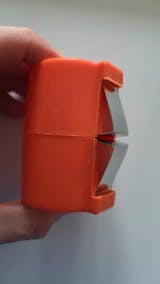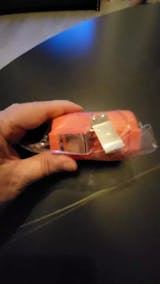What We Find in the Margins
And why old recipes are more than just instructions.
I’m flipping through a bundle of old, fading recipe cards from my grandmother’s kitchen drawer.
Some are stained. Others torn at the corners. A few are just scraps of yellowed paper with notes in hurried, looping cursive. Most are incomplete—no cook time, no oven temp, no list of ingredients, just a quiet trust that “you’ll know what to do.”
One recipe simply reads: “Cookies – good.”
That’s it.
No measurements.
No steps.
Just “good.”
And in that word, I find her.

The Stories We Didn’t Know Were Recipes
My grandmother’s memory has faded with time. She doesn’t remember where the oatmeal cookie recipe came from. She doesn’t remember why she wrote “good” in the margin.
But I do remember her.
The way she moved through her kitchen, slim and steady, in a robe that smelled like flour and lilac.
The lopsided burners on her stove.
The mismatched measuring spoons.
The fried chicken served every Sunday with cucumbers soaked in vinegar and the softest, steam-split cornbread muffins.
None of those recipes are written down.
They lived in her hands.
And maybe, somehow, they live in mine.
Handwritten Recipes Are a Form of Time Travel
It’s easy to think that recipes are just formulas. But they’re also biographies.
You can see it in the way ingredients are crossed out or added in pencil.
You can feel it in the thumbprints of butter and the stains of sauce.
You can hear it in the way some cards trail off halfway through, as if saying, “You’ve seen me do this. You’ll figure it out.”
And what they don’t tell you is just as precious as what they do.
The Kind of Tools That Belong With Recipes Like These
At RainbownHome, we think a lot about people like my grandmother.
Not just because she cooked, but because she cooked that way—imperfectly, intuitively, from memory.
Her tools weren’t trendy. They weren’t color-coded. But they worked. They fit her hands and her habits.
That’s the kind of kitchen we believe in.
One where garlic is pressed with care, not rushed.
Where tools last long enough to be passed down, just like the recipes.
Where what you use says as much about who you are as what you make.
This Mother’s Day, We’re Thinking About Her
And maybe you're thinking about someone, too.
Someone who taught you how to stir, not just the pot—but your instincts.
Someone whose “measurements” were a spoonful, a palmful, and a feeling.
Someone whose handwriting is now a map back to your childhood.
This week, we’re honoring those women with tools made in their spirit:
Simple. Honest. Built to last.
Use code MOTHERDAY for 20% off
For her hands. Her kitchen. Her legacy.
Because the greatest recipes don’t always need to be perfect — they just need to be remembered.




























